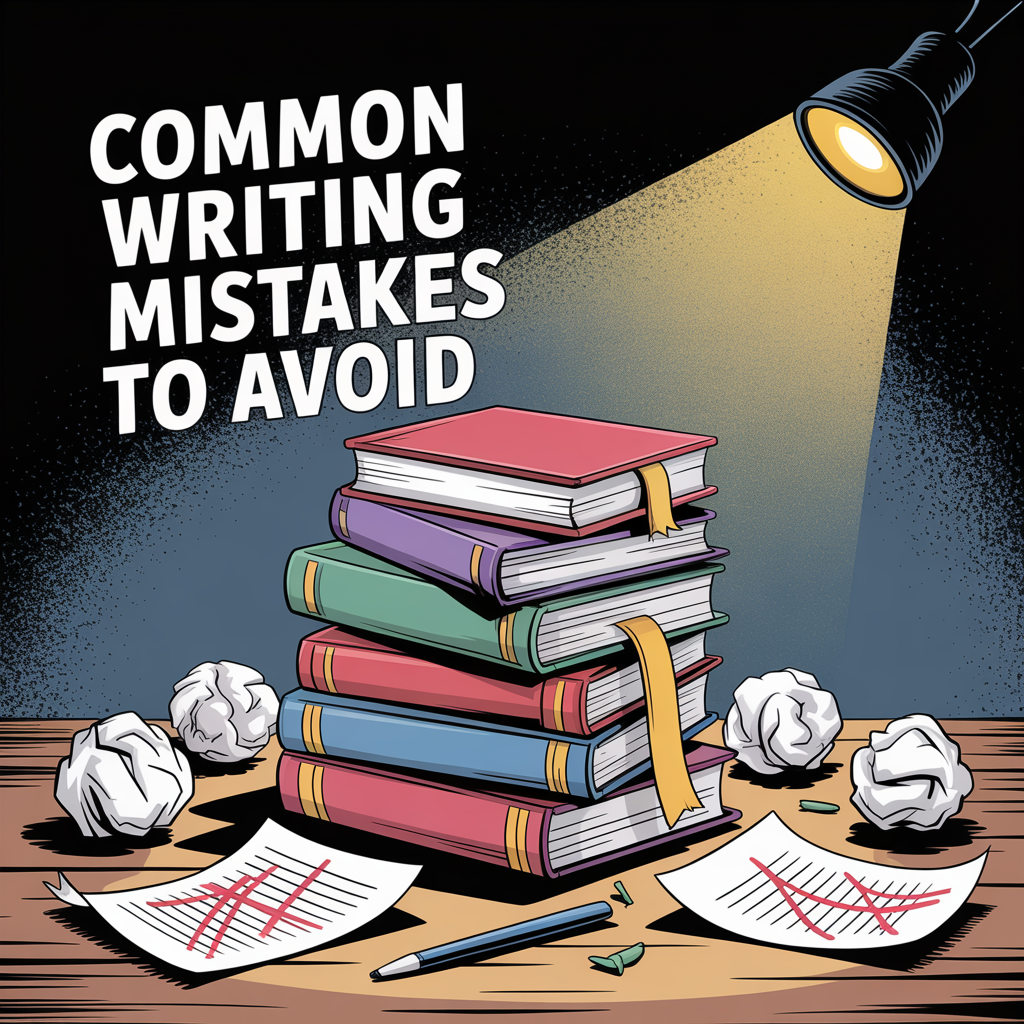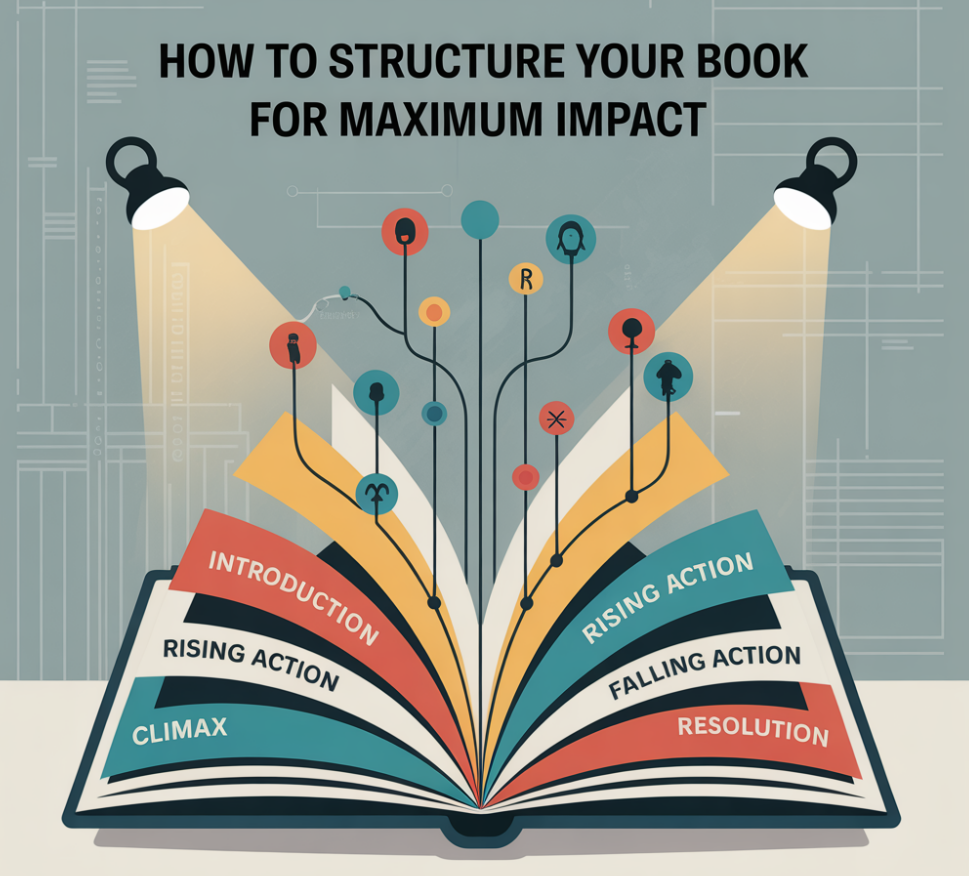Step-by-Step Guide To Publishing Your First Book

Taking the first step toward publishing a book can feel like standing at the base of a daunting mountain. Yet, it’s a mountain worth climbing. Publishing your book is more than just putting words on paper. It’s sharing your unique perspective and making your voice heard. Whether you dream of inspiring others, spreading knowledge, or simply checking an item off your bucket list, the impact of seeing your name in print is immeasurable.
Start by asking yourself why you want to publish a book. Is it to tell a story that’s been brewing in your mind for years? Maybe it’s to showcase your expertise in a field you’re passionate about. Having a clear goal not only fuels your motivation but also guides your publishing journey. It’s like setting your GPS before hitting the road. You’ll know where you’re headed and why you’re going there. This act of defining your goals is a significant achievement in your publishing journey, empowering you to take the next steps with confidence.
Then there’s the publishing landscape to consider. It’s a vast, ever-evolving field with more options than ever before. Understanding this terrain is crucial. Are you drawn to the traditional route, working with publishing houses and literary agents? Or does the freedom and control of self-publishing appeal to you more? Recognizing the lay of the land, including the roles of literary agents, editors, and publishers, helps you make informed choices and avoid potential pitfalls.
Writers often get stuck at the idea stage, overwhelmed by the enormity of their ambition. Breaking down the process helps. Think of it like assembling a puzzle: start with the sections you can piece together first, and gradually, the bigger picture will emerge. By laying this groundwork in your mind, you set yourself up for success and fulfillment in your publishing adventure.
Writing Your Manuscript: From Idea to Draft
Launching into writing your first manuscript can feel exhilarating and nerve-wracking, but the magic starts with an idea. That spark gets you from a blank page to a narrative full of life. Begin by exploring what truly fascinates or excites you. Whether it’s a short story, a weighty novel, or an insightful non-fiction piece, your genuine interest fuels the words you put on the page.
Consistency is your best friend once you have your idea. Establishing a regular writing routine keeps you moving forward. It doesn’t have to be an everyday grind if that doesn’t suit your lifestyle, but finding a rhythm, whether it’s weekly or daily, creates momentum. Consider setting achievable goals that fit within your schedule. It can be a few minutes on your lunch break or at your kids soccer practice. Maybe it’s a weekly word count or finishing a chapter every two weeks. Whatever it is, make it realistic and attainable, so every writing session feels like a win.
The first draft isn’t about perfection. It’s OK and expected for the rough draft to be not good. It’s about laying down the foundation. Embrace imperfection and be kind to yourself when writer’s block rears its head. Everyone hits a wall occasionally, and it’s part of the process. Overcoming it might mean taking a break, shifting your perspective, or working on a different section of your book. The key here is persistence, learning to restart when you’re stuck, and remembering that even a rough draft is progress. This resilience and determination are key to your success as a writer.
Finally, don’t underestimate the power of feedback. Sharing your draft with trusted friends or writing groups provides fresh eyes and perspectives. They can often catch plot holes or suggest ideas where you feel stuck. But choose your feedback circle wisely, seeking out voices that will be both supportive and honest. Constructive criticism can be crucial in shaping your story, helping refine it before moving on to more formal editing stages. Remember, feedback is a tool to refine, not a blow to creativity. Embrace constructive criticism and focus on improving areas that resonate with you. Balancing your voice with the insights of others creates a more compelling narrative.
Editing Like a Pro: Refining Your Work
So, you’ve got a draft in front of you. Congratulations! Now comes the crucial editing phase, a bit like polishing a rough gemstone. Good editing can transform your manuscript, making it shine with clarity and impact.
Start with self-editing to catch glaring issues and tidy up your narrative flow. Reading your draft aloud helps pinpoint awkward phrasing and clunky dialogue; your ears catch things your eyes might miss. Pay attention to structure, pacing, and character development, but don’t fret too much about nitpicking every grammar error at this stage.
Consider bringing in a professional editor once you’re content with your revisions. These pros bring a fresh, critical viewpoint and possess the expertise to elevate your work to its best version. There’s developmental editing, which focuses on the big picture of structure and flow, and copyediting, which drills down into grammar and style. Investing in a good editor can make the difference between a decent book and an unforgettable one.
Taking feedback is another essential part of the editing process. Professional or peer comments might feel personal, especially if they challenge your vision. Remember, feedback is a tool to refine, not a blow to creativity. Embrace constructive criticism and focus on improving areas that resonate with you. Balancing your voice with the insights of others creates a more compelling narrative.
Incorporating changes based on feedback doesn’t just enhance the manuscript—it also hones your skills as a writer. Through this revision dance, you’re making your current book better and fortifying your abilities for future projects. It’s an evolving process that moves you closer to reaching your publishing dreams.
Choosing the Right Publishing Route: Traditional vs. Self-Publishing
Deciding how to publish your book is a significant step that sets the course for your publishing journey. Two primary routes to consider are traditional publishing and self-publishing. Learn about each and pick the route that best aligns with your goals and circumstances.
Traditional publishing involves working with established publishing houses. If you’re leaning this way, you’ll be engaging with literary agents and navigating submissions to publishers. The traditional path often includes professional editing, cover design, and marketing support, all provided by the publisher. However, it can be a lengthy process, with competitive barriers to entry. Yet, the credibility and resources associated with a known publisher can be a significant advantage.
Self-publishing, on the other hand, offers you more control over the creative and marketing processes. You’re in the driver’s seat, making decisions on content, design, pricing, and distribution. This route is typically faster to market, but requires you to handle aspects like editing and cover design independently or hire professionals. It demands a good grasp of marketing strategies and some upfront financial investment to bring your book to life. But the freedom and control it offers can make you feel independent and in charge of your publishing journey.
Each path has its pros and cons. Traditional publishing might appeal if you’re looking for market credibility and support. At the same time, self-publishing suits those who prefer autonomy and direct oversight over every detail. Weighing these factors based on your capabilities and aspirations is key.
Consider doing a bit of hybrid, or a mix of both. Some authors start with self-publishing to build a reader base before moving to traditional deals for future projects. The decision rests on your vision and circumstances. Whether you crave the DIY spirit of self-publishing or the structure of conventional publishing, there’s no wrong choice. Just pick the route that feels right for you.
To learn more about the pros and cons of self-publishing versus traditional publishing, click HERE to read my blog post about it.
Preparing Your Manuscript for Submission or Publication
With your manuscript polished and publishing route planned, it’s time to prepare your book for the world. Presentation is everything, whether you’re submitting to a traditional publisher or gearing up for self-publication.
For traditional publishing, a strong query letter is your calling card. It needs to be sharp, engaging, and give a glimpse into the soul of your book. A successful query doesn’t just summarize the plot; it hooks the reader, highlighting what makes your book stand out in a crowded market. If needed, pair this with a book proposal detailing your book’s concept, target audience, and marketing potential.
If you’re self-publishing, formatting your manuscript correctly becomes crucial. Various styles and standards depend on your chosen platform. Amazon’s Kindle Direct Publishing (KDP) or others have specific guidelines. Proper formatting ensures that your book looks professional and reads well across different devices. I used Atticus to format the book myself. There is a learning curve, but it is not too difficult.
Securing an International Standard Book Number (ISBN) is vital in giving your book legitimacy and trackability in sales channels. Purchasing your own ISBN is recommended for self-published books, as it allows you to maintain complete ownership and control over your book. Some platforms provide the ISBN numbers for free when publishing, but they restrict the use of that number to that platform. In Canada, you can obtain an ISBN number at no cost when you apply to the government. (https://www.canada.ca/en/library-archives/services/publishers/isbn.html). In most other jurisdictions, you need to purchase the numbers.
Don’t forget about copyrighting. While original works are automatically protected under copyright law, registering your book can offer additional legal protection and peace of mind. It’s a straightforward process that goes a long way toward safeguarding your work. https://www.copyright.gov/registration/literary-works/
By nailing these essential preparations, you’ll be well-equipped to capture publishers’ attention or deliver a professional product directly to readers. It’s about setting the stage for your book to make the entrance it deserves.
Designing Your Book: Covers and Layouts
Design plays a massive role in a book’s success. The saying goes “you can’t judge a book by it’s cover, but the truth is, buyers do judge a book by it’s cover. Your cover isn’t just wrapping; it’s the face of your book, the first impression for potential readers. Think about your target audience and the genre. The cover should align with their expectations while also grabbing attention.
Choosing the right designer might seem like hunting for a unicorn, but it’s worth the effort. A professional designer can translate your vision into a beautiful and commercially appealing cover. Whether you go with a freelance designer or use services offered by a self-publishing platform, look at portfolios for styles that resonate with your vision.
Interior layout is just as important, ensuring your text is legible and visually pleasing. Different formats (print, e-books) require specific layouts, so understanding the norms of your chosen format helps here. For e-books, consider how your text appears across various devices and maintain simplicity to avoid compatibility issues.
The overall aesthetic should facilitate an enjoyable reading experience, with a clean layout and appropriate fonts. Professional typesetting can enhance readability and give your book that polished, professionally published feel.
Good design isn’t just about appearance, but about storytelling too. The correct design elements align with your book’s themes and tone, reinforcing the narrative when a reader glances at it. When coordinated well, your book design becomes a powerful tool in captivating audiences and driving sales.
Marketing and Promoting Your Book: Getting the Word Out
Getting your book into readers’ hands involves savvy marketing and promotion. It’s not just an afterthought; it’s as critical as writing the book itself. One of the first steps is to develop your author platform. This includes establishing a presence on social media, creating a website, and engaging with potential readers early on.
Consider teasing content on platforms like Goodreads or Instagram, which are environments ripe with avid readers. Sharing behind-the-scenes insights into your writing process or snippets from your book can build interest and anticipation. The goal is to create a community around your book where readers feel connected and engaged.
Planning a book launch is another effective way to spotlight your work. Whether it’s a virtual launch or an in-person event, this is an opportunity to create buzz. Think of it as throwing a party for your book—a celebratory moment where readers, friends, and family can share in the excitement.
Social media promotion is key, but it’s more than just firing off promotional tweets. Engage with your audience, respond to comments, and participate in discussions. Book giveaways, blog tours, and interviews add variety to your promotional efforts and reach different reader segments.
Developing a marketing strategy that leverages multiple channels increases visibility. For instance, collaborating with bloggers for book reviews exposes your work to broader audiences. Consider using advertising tools available on platforms like Facebook or Amazon. Of course, always track what’s working and be prepared to tweak your approach based on what you discover. I used Click Testing for Authors to develop good face book ads.
Promoting your book is ultimately about building authentic relationships with your readers and keeping the conversation going. You’re more likely to turn casual viewers into enthusiastic readers through consistent and genuine engagement.
Understanding the Post-Publication Journey: Next Steps
Once your book hits the market, the journey doesn’t just end there. The post-publication phase is about managing the momentum you’ve built and looking forward to future opportunities. A vital part of this is distribution and sales management. Keeping an eye on where and how your book is selling can provide insights into what’s working and where there might be room for improvement.
Engage actively with your readers. This goes beyond social media interactions. Consider organizing book signings, attending literary events, or running after-the-fact Q&A sessions. Reader engagement helps solidify your community and builds loyalty. These interactions can offer valuable feedback, guiding future writing projects and marketing strategies.
It’s also crucial to assess your book’s performance objectively. Review sales data, reader reviews, and any press you’ve received. Use this information to evaluate what marketing approaches and channels were practical. This reflection highlights areas for improvement and boosts your strategic planning skills for subsequent projects.
Planning your next steps could mean starting on a new book, exploring different genres, or even expanding your current work into a series. The experience you’ve gained through publishing will help shape these decisions, providing a solid platform to build your future writing career.
Publishing your first book is a monumental achievement. Still, it’s just one milestone among many on your journey as an author. With each step, from the initial idea to interacting with fans post-launch, you’re crafting a unique story that is yours, both on the page and in your growing career.






